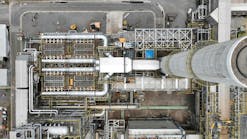EPA finalizes amendments to refinery emissions control requirements
The US Environmental Protection Agency issued a final rule on Nov. 26 which amends its National Emissions Standards for Hazardous Air Pollutants (NESHAP) and New Source Performance Standards (NSPS) for refineries. The rule went into effect that day.
The changes aim to clarify the rules’ requirements and make technical corrections and revisions to requirements for work practice standards, recordkeeping, and reporting that EPA proposed on Apr. 10, the agency said. The rule also finalized amended compliance date requirements for existing maintenance vents from Aug. 1, 2017, to Dec. 26, 2018, which EPA proposed on July 10, it added.
NESHAP covers two sets of maximum achievable control technology (MACT) requirements. Requirements that EPA imposed on Dec. 1, 2015, included revisions to the continuous compliance alternatives for catalytic cracking units and provisions specific to startup and shutdown of catalytic cracking units and sulfur recovery plants.
The 2015 rule also finalized technical corrections and clarifications to portions of the refinery NSPS section to address issues which the American Petroleum Institute had raised. These included corrections and clarifications to provisions for sulfur recovery plants, performance testing, and control device operating parameters.
EPA said it received three separate petitions to reconsider the 2015 rule. Two of these were filed jointly by API and the American Fuel & Petrochemical Manufacturers.
The first, which was filed on Jan. 19, 2016, asked EPA to take a second look at the maintenance vent provisions in Refinery MACT 1; the alternate startup, shutdown, or hot standby standards for fluid catalytic cracking units (FCCU) in Refinery MACT 2; the alternate startup and shutdown for sulfur recovery units in Refinery MACT 2; and the new catalytic reforming units (CRU) purging limitations in Refinery MACT 2.
The second, which API and AFPM filed on Feb. 1, 2016, outlined several specific issues related to the work practice standards for pressure relief devices (PRD) and flares, and the alternative water overflow provisions for delayed coking units (DCU), as well as other specific issues on other aspects of the rule.
Earthjustice and several other environmental groups filed the third reconsideration petition on Feb. 1, 2016. They said that further public comment was needed on several issues which they believed had not been addressed adequately, including work practice standards for PRDs and flares, alternative water overflow provisions for DCUs, reduced monitoring provision for fence lines, and adjustments to the risk assessment to account for these changes from what was proposed. EPA sent them letters on June 16, 2016, granting them reconsideration of these issues.
Officials at API and AFPM were studying the amendments that EPA made final on Nov. 26 and did not comment immediately.
Contact Nick Snow at [email protected].

Nick Snow
NICK SNOW covered oil and gas in Washington for more than 30 years. He worked in several capacities for The Oil Daily and was founding editor of Petroleum Finance Week before joining OGJ as its Washington correspondent in September 2005 and becoming its full-time Washington editor in October 2007. He retired from OGJ in January 2020.
